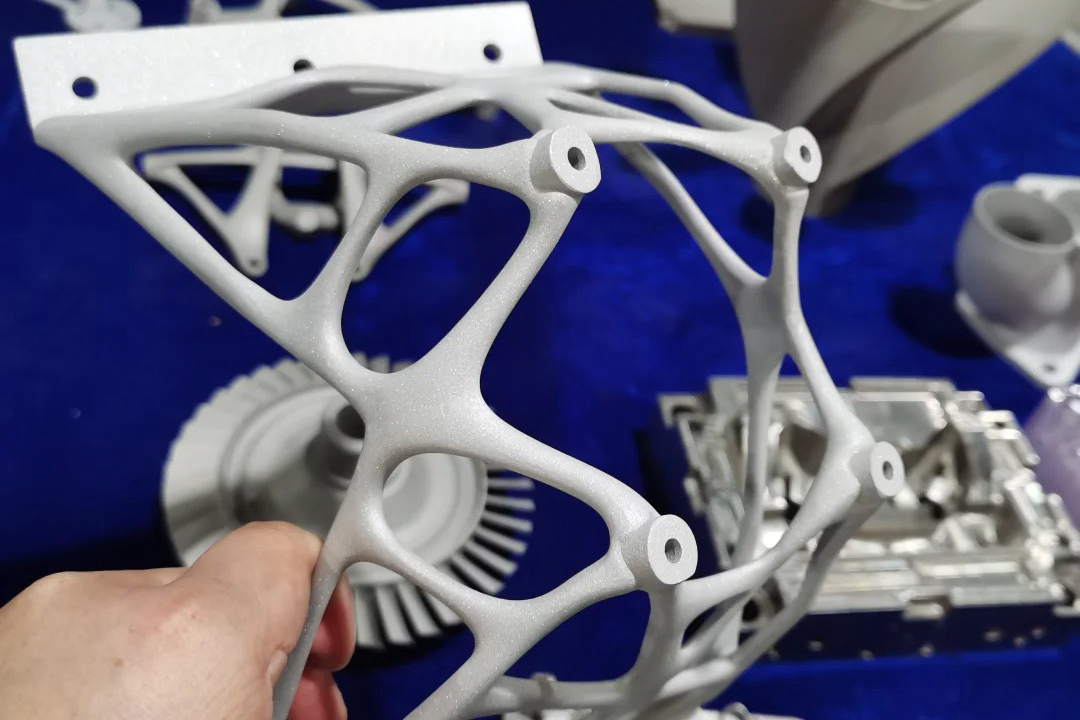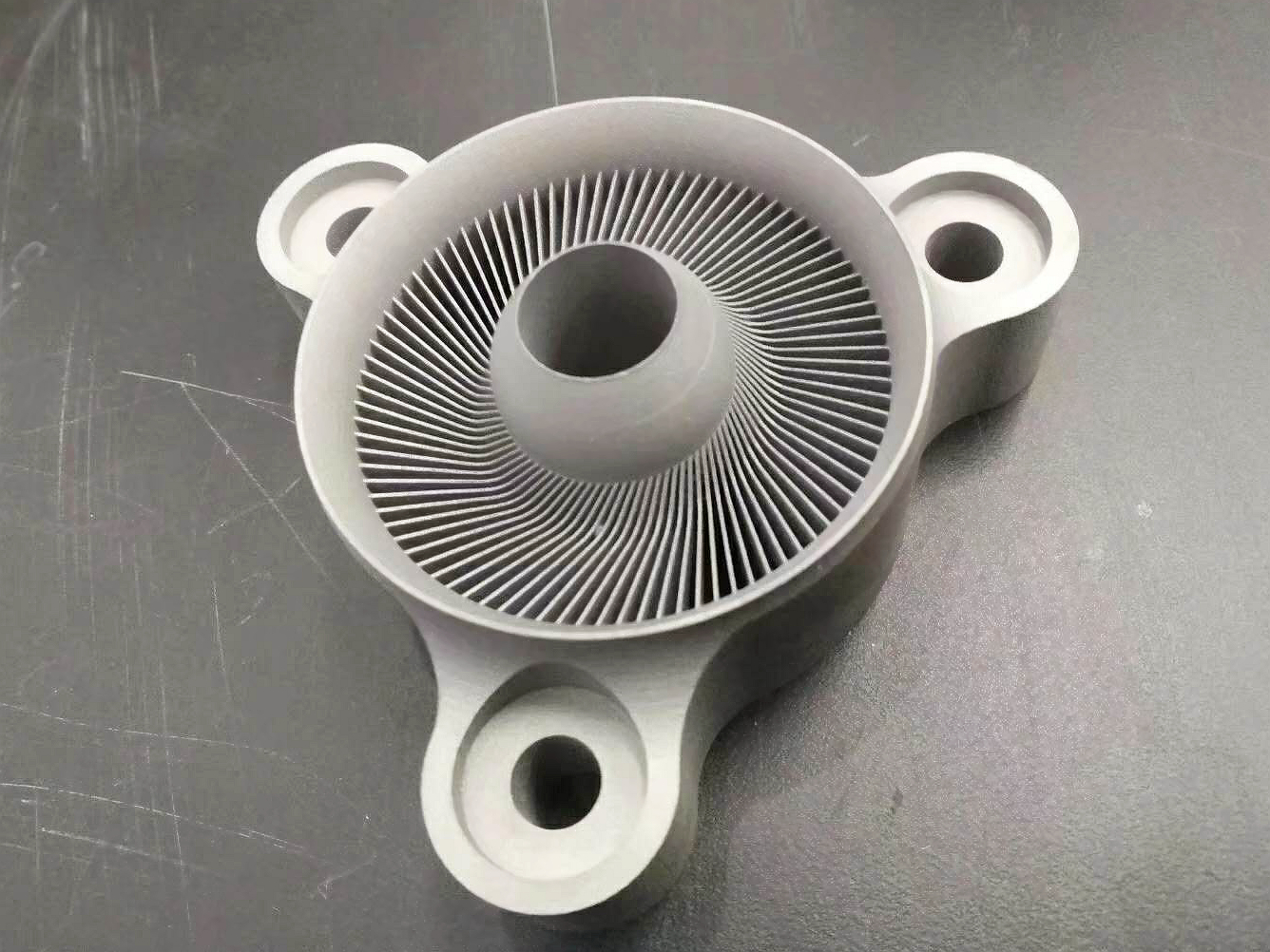Stainless Steel SUS316
SUS316 3D Printing Materials Introduction
Stainless Steel SUS316 is a molybdenum-alloyed austenitic stainless steel offering enhanced resistance to corrosion, pitting, and oxidation. It performs reliably in chloride-rich, marine, and chemical processing environments where standard stainless steel would degrade. With stainless steel 3D printing, SUS316 enables the production of complex components such as valves, pumps, and marine fittings requiring both corrosion resistance and structural durability.
SUS316 Similar Grades Table
Country/Region | Standard | Grade or Designation |
|---|---|---|
USA | ASTM | 316 |
UNS | Unified | S31600 |
ISO | International | X5CrNiMo17-12-2 |
China | GB/T | 06Cr17Ni12Mo2 |
Germany | DIN/W.Nr. | 1.4401 |
SUS316 Comprehensive Properties Table
Category | Property | Value |
|---|---|---|
Physical Properties | Density | 7.98 g/cm³ |
Melting Point | 1370–1400°C | |
Thermal Conductivity (100°C) | 16.3 W/(m·K) | |
Electrical Resistivity | 74 µΩ·cm | |
Chemical Composition (%) | Iron (Fe) | Balance |
Chromium (Cr) | 16.0–18.0 | |
Nickel (Ni) | 10.0–14.0 | |
Molybdenum (Mo) | 2.0–3.0 | |
Carbon (C) | ≤0.08 | |
Mechanical Properties | Tensile Strength | ≥515 MPa |
Yield Strength (0.2%) | ≥205 MPa | |
Elongation at Break | ≥40% | |
Hardness (HRB) | ≤95 | |
Modulus of Elasticity | 193 GPa |
3D Printing Technology of SUS316
SUS316 is processed using Selective Laser Melting (SLM), Direct Metal Laser Sintering (DMLS), and Binder Jetting. These technologies produce geometrically complex parts with good strength and high corrosion resistance.
Applicable Process Table
Technology | Precision | Surface Quality | Mechanical Properties | Application Suitability |
|---|---|---|---|---|
SLM | ±0.05–0.2 mm | Excellent | Excellent | Marine Parts, Pressure Housings |
DMLS | ±0.05–0.2 mm | Very Good | Excellent | Chemical, Biomedical Components |
Binder Jetting | ±0.1–0.3 mm | Moderate | Good (with HIP) | Large Non-Pressure Structures |
SUS316 3D Printing Process Selection Principles
SLM achieves ±0.05 mm precision and >99.8% density, making it suitable for marine valves, pump bodies, and chemical equipment under mechanical or fluidic pressure. DMLS is preferred for medical or corrosive industrial parts. It provides uniform grain structure, high ductility, and supports intricate lattices and fine internal features. Binder Jetting is suited for larger, low-load parts. Achievable dimensional accuracy is ±0.3 mm, with density improved to ≥97% using post-HIP treatment.
SUS316 3D Printing Key Challenges and Solutions
Residual stress and distortion are mitigated using stress-relief annealing at 850–950°C post-printing for better dimensional stability. Molybdenum segregation during printing may affect corrosion resistance. Tight laser control (300–350 W power, 800–1000 mm/s scan speed) ensures homogeneity. Surface finish (Ra 6–12 µm) may not meet hygienic standards directly. CNC machining and electropolishing are applied for functional surfaces. For parts exposed to chemicals, passivation is used to restore and stabilize the chromium oxide protective film.
Typical Post-Processing for SUS316 3D Printed Parts
Annealing Heat Treatment at 850–950°C relieves internal stress and restores ductility, improving structural integrity and weldability in corrosive environments. CNC Machining achieves dimensional tolerances within ±0.01 mm, ensuring precise threads, sealing surfaces, and interface geometries in functional assemblies. Electropolishing reduces Ra below 0.6 µm, improving corrosion resistance, fluid flow, and cleanability for medical and food-grade components. Passivation chemically removes free iron from surfaces, enhancing pitting resistance and forming a passive chromium-rich oxide layer for aggressive chemical exposure.
Industry Application Scenarios and Cases
SUS316 is widely used in:
Marine: Propeller housings, valves, and pump components with long-term seawater exposure.
Medical: Dental fixtures, surgical instruments, and lab equipment requiring sterilization and corrosion resistance.
Chemical Industry: Flanges, tank connectors, and nozzles in acidic or chloride-rich fluid handling systems.
Food Processing: Fittings, mixers, and tools requiring easy-to-clean and sanitary-grade material surfaces. A marine engineering case featured 3D printed SUS316 impellers with electropolished surfaces, achieving extended corrosion resistance and cutting replacement frequency by 35%.
FAQs
How does SUS316 differ from SUS304 in corrosion resistance for 3D printed parts?
What applications benefit most from SUS316 stainless in additive manufacturing?
Which post-treatments improve SUS316’s resistance in harsh environments?
Can SUS316 be used for pressure-rated 3D printed components?
What is the optimal surface finishing method for SUS316 sanitary parts?



